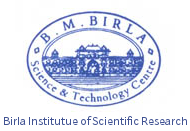Organism Details:
Shape and Size
�1�0� �t�o� �2�0� �¼�m� �i�n� �d�i�a�m�e�t�e�r� �s�p�h�e�r�i�c�a�l� �o�r� �o�v�a�l� �s�h�a�p�e�d
Genome Information
Entamoeba histolytica HM-1:IMSS-B is a anaerobic and Zoonotic parasitic protozoan ( GI:460475428) (3428 rc) bp .The genome structure ofEntamoeba histolytica consists of 7,362 genes and 7,358 proteins, Pseudo Genes: 1, tRNAs: 3. The GC content ofEntamoeba histolytica is about 25.1%.
Pathological Factor
.After a viable cyst is ingested, it travels to the small intestine where excystation occurs and it divides into four trophozoites, which is the active stage of the parasite that only survives in the host and in fresh feces. These trophozoites then mature into adult trophozoites and colonize the large intestine (particularly the caecum). The active (trophozoite) stage exists only in the host and in fresh faeces; cysts survive outside the host in water and soils and on foods, especially under moist conditions on the latter. When swallowed they cause infections by excysting (to the trophozoite stage) in the digestive tract. trophozoiteinduces a rapid influx of calcium into the contacted cell. This stops all membrane movement. The internal organization is disrupted, organelles lyse and the cell dies. The amoeba may ingest the dead cell or intake nutrients from the cell. Presence of trophozoites containing red blood cells is indicative of tissue invasion by virulent E. histolytica parasites.
Disease
Trophozoites are found on the surface of ulcers, in the exudates and in the crater. There is little inflammatory response in early ulcers, but as the ulcer widens there is an accumulation of neutrophils, lymphocytes, histiocytes, plasma cells and sometimes eosinophils. Occasionally (5%-10%) trophozoites penetrate the muscle and serous layers which perforates the intestine. Extraintestinal ambiasis can occur. Infections that sometimes last for years may be accompanied by no symptoms, vague gastrointestinal distress, dysentery (with blood and mucus); ulcerative and abscess pain and, rarely, intestinal blockage. Onset time is highly variable. other associated diseases are: Perianal ulceration Pleuropulmonary disease,Brain abscess ,Genitourinary disease gastrointestinal distress, dysentery (with blood and mucus); ulcerative and abscess pain.
|








